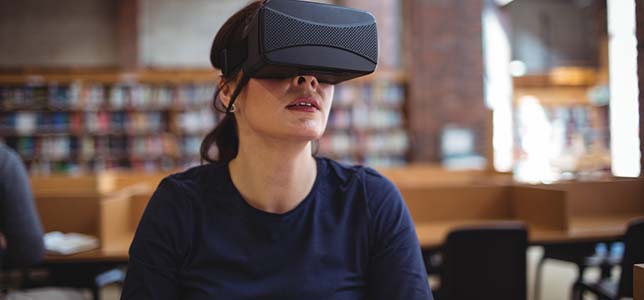Report: VR and AR to Double Each Year Through 2021

Global spending on augmented reality and virtual reality (AR/VR) will double, at a minimum, each year through 2021, according to a new forecast from International Data Corp. (IDC).
Total spending on products and services in the category will reach $215 billion in 2021, according to the company, up from $11.4 billion this year and representing a compound annual growth rate (CAGR) of 113.2 percent for the forecast period.
This year the United States will lead spending in the category at $3.2 billion, followed by Asia/Pacific excluding Japan (APeJ) at $3 billion and Western Europe at $2 billion. IDC predicts APEJ to take the top spot from the US for a couple years, slowing in 2019 and relinquishing the top spending slot in 2020 while Western Europe will move into the second spot in the following year.
Canada will see the fastest growth, with a CAGR of 145.2 percent over the forecast period. Other leaders in terms of growth include Central and Eastern Europe at 133.5 percent, Western Europe at 121.2 percent and the U.S. at 120.5 percent.
"Within the regions, the industry segments driving AR/VR spending start from roughly the same place, but then evolve quite differently over time," according to a news release. "The consumer segment will be the largest source of AR/VR revenues in each region in 2017. In the United States and Western Europe, the next largest segments are discrete manufacturing and process manufacturing. In contrast, the next largest segments in APeJ in 2017 are retail and education. Over the course of the forecast, the consumer segment in the U.S. will be overtaken by process manufacturing, government, discrete manufacturing, retail, construction, transportation and professional services. In APeJ, the consumer segment will remain the largest area of spending throughout the forecast, followed by education, retail, transportation and healthcare in 2021. Consumer spending will also lead the way in Western Europe, with discrete manufacturing, retail and process manufacturing showing strong growth by the end of the forecast."
"The consumer, retail and manufacturing segments will be the early leaders in AR & VR investment and adoption. However, as we see in the regions, other segments like government, transportation and education will utilize the transformative capabilities of these technologies," said Marcus Torchia, research director of IDC Customer Insights & Analysis, in a prepared statement. "With use cases that span both AR & VR environments, we see a significant opportunity for companies to re-cast how users interact in business processes and everyday tasks."
The company predicts that VR spending will lead the way in 2017 and 2018, as consumers buy hardware, games and other content. After 2018, however, IDC predicts that AR spending will take the lead as companies buy viewers and software.
This year the largest industry use case by spending will be retail showcasing at $442 million. By the end of the forecast period, the largest use case will be industrial maintenance at $5.2 billion, followed by infrastructure maintenance at $3.6 billion. Retail showcasing will claim the third spot at $3.2 billion.
Consumer spending, on the other hand, will be led by games throughout the forecast period, with total spending of $9.5 billion in 2021.
About the Author
Joshua Bolkan is contributing editor for Campus Technology, THE Journal and STEAM Universe. He can be reached at [email protected].